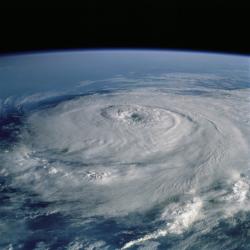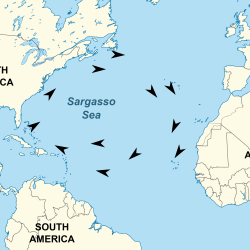Chasing Harmful Algal Blooms in the Gulf of Maine with NOAA
The National Oceanic and Atmospheric Administration (NOAA) operates a fleet of more than a dozen oceanographic research vessels, many of which provide opportunities for aspiring student scientists to stretch their “sea legs” on research cruises.
In October 2018, Jake Schlenoff, a senior biological sciences major at the University of Maryland, joined a crew aboard the NOAA Ship Nancy Foster in the Gulf of Maine. The objective of the 10-day research cruise was to track the activity of algal species that can contribute to harmful algal blooms, more commonly known as “red tide” events.
Schlenoff joined three other Terps on the vessel: Teresa McTigue (B.S. ’84, zoology), a NOAA ecologist and chief scientist of the research cruise; Dave Kidwell (M.S. ’07, marine, estuarine & environmental sciences), a NOAA branch chief; and Matt Forney, a student in the Master of Professional Studies in Geospatial Information Sciences Program in Geographical Sciences taking a semester-long hiatus to serve as executive officer for the Nancy Foster.
The communications team in UMD’s College of Computer, Mathematical, and Natural Sciences caught up with Schlenoff to talk about his experience aboard the NOAA ship Nancy Foster. Read on for his thoughts and reflections.
What was your role on the research cruise?
My job was to help examine trends and patterns of harmful algal blooms that contribute to red tide events in the Gulf of Maine. Algal species, such as the one we’re working with, contain a toxin. When mussels and clams feed on the algae, the toxins build up in the shellfish and people who eat the shellfish can get paralytic shellfish poisoning. This project helps to forecast when and where these toxic blooms will happen.
In the winter, our species of algae makes cysts that sink to the ocean floor. We need to know where the cysts are so that we’ll know where the algae will emerge in the spring. We used a coring device to take sediment samples all through the American waters of the Gulf of Maine.
Once the sampler was back aboard the ship, we took the core of sediment into the wet lab where we separated the cysts from the sediment and preserved them for counting back on shore. We also collected additional samples for a project to see if we can use quantitative genetic analysis to determine the abundance of cysts in a sample rather than counting by eye through a microscope.
What was it like living on a boat for more than a week?
Being on a boat for that amount of time was a great and unique experience. The boat was only 187 feet long, so with an entire science team and the ship’s crew on board, everybody got to know everybody else very well. We all ate together, worked together and enjoyed our time together.
The only real drawback to the boat was that it is flat bottomed, meaning that every bit of wave action really moved the boat around. We actually had a tropical depression come in early in the voyage, so we had to dock in Maine for a brief period in time. The work we conducted was over the edge of the ship, so we had to stay tethered to a physical structure on the ship to make sure that we wouldn’t go overboard.
What was the best part of your experience?
We docked in Maine for about 36 hours as a result of heavy wave action occurring close by. Our team had all come to know each other pretty well on the boat, but this stop was a great experience for everyone on the science team to become better friends. We ended up spending a day walking about five miles to a lighthouse and spend the night going out to dinner and exploring the city of Rockland. We even caught up with the ship’s crew one night and got to know them better as well.
Once we got back onto the ship to continue our work, everyone seemed so refreshed and comfortable. We were laughing, smiling and joking around—and still getting our work done, of course. There was sort of a new life on board for the rest of the trip.
Also, I was lucky enough to work with three other Terps. It was really exciting to see where everyone ended up and how UMD helped shape their future.
How can UMD students find similar opportunities?
NOAA tries to recruit a UMD student for the harmful algal bloom cruise each year. If you’re interested in enriching your educational experience through a research cruise, feel free to reach out to me and I would be happy to talk more about it and point you in the right direction.
For more general opportunities, my advice would be to reach out and inquire as much as possible. There are plenty of opportunities out there. Getting to be a part of an experience like this broadens both your horizons and your resume. Reach out, see what’s out there and jump on it.
###
Media Relations Contact: Matthew Wright, 301-405-9267, mewright@umd.edu
University of Maryland
College of Computer, Mathematical, and Natural Sciences
2300 Symons Hall
College Park, MD 20742
www.cmns.umd.edu
@UMDscience
About the College of Computer, Mathematical, and Natural Sciences
The College of Computer, Mathematical, and Natural Sciences at the University of Maryland educates more than 9,000 future scientific leaders in its undergraduate and graduate programs each year. The college's 10 departments and more than a dozen interdisciplinary research centers foster scientific discovery with annual sponsored research funding exceeding $175 million.







